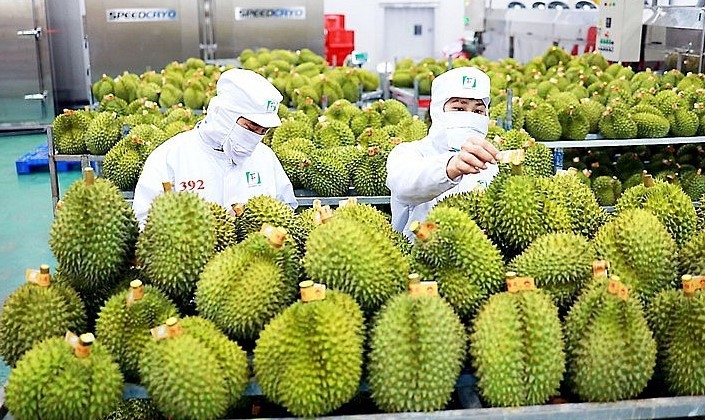 |
| Durian is one of the fruit and vegetable export items with strong growth. (Photo: kinhtedothi.vn) |
This year, Vietnam's fruit sector has had a stream of good news as many products cracked new markets. Pomelos are new to the Republic of Korea, followed by fresh coconuts and frozen durians, which have also been officially exported to China.
The official opening of markets for these products has helped diversify export markets and products, thus generating greater added value for Vietnamese fruits. The industry is forecast to grow even stronger this year if Vietnam takes advantage of market opportunities.
Durian - the "king of fruits," is the biggest contributor to the revenue, reaching approximately 1.7 billion USD in the first seven months of this year, accounting for 41% of the total.
Notably, the export of frozen durian is predicted to earn 400-500 million USD this year, and the product is expected to join the "billion-USD" club by 2025.
According to Deputy Minister of Agriculture and Rural Development Phung Duc Tien, the official export of frozen durian will bring a significant advantage, helping the sector diversify products and achieve higher values.
Doan Thu Giang, Chairwoman of the Board of Directors of Vinh Khang JSC, said apart from fresh durian, the company is now prepared to export frozen products as well.
According to Dang Phuc Nguyen, Secretary General of the Vietnam Fruit and Vegetable Association, the export of frozen durian will help balance production, stabilise prices, and increase income for both farmers and businesses.
In 2023, China spent nearly 6.7 billion USD on importing fresh durian and over 1 billion USD on the frozen product. The official export of frozen durian to China presents a chance for Vietnamese businesses and cooperatives to invest in infrastructure, and freezing and processing technology.
Nguyen said authorities need to quickly establish national standards that clearly define the criteria for fresh and frozen durian export, serving as a basis for accurate and objective quality control.
Mekong Delta region contributes roughly 31% to agricultural sector’s GDP
Statistics from the Ministry of Industry and Trade show that the Mekong Delta region is contributing about 31% to GDP of the entire agricultural sector, with roughly 50% of rice output, 95% of rice exports, 65% of aquaculture and exploitation output, 60% of fish exports and approximately 70% of all type of fruits, reported the Voice of Vietnam.
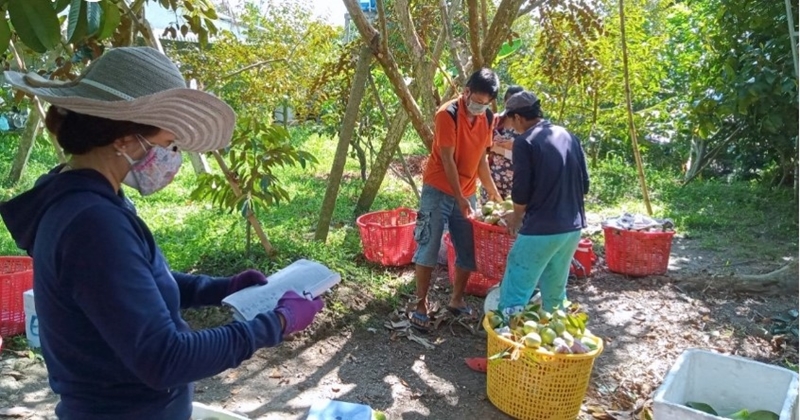 |
| The Mekong Delta region contributes about 31% to GDP of the entire agricultural sector. (Photo: VOV) |
The Mekong Delta region possesses export items worth over US$1 billion such as rice, seafood, and fruit.
Despite its strengths, the region's economy is considered to have not developed on a par with its potential when facing numerous challenges such as climate change, water resource depletion, and saltwater intrusion.
Therefore, it is very necessary to properly assess potential and challenges and devise appropriate development solutions to contribute to the goal of developing the Mekong Delt into a region with a fairly developed level compared to the whole country.
It is estimated that this year the total rice export volume of the country will remain above 8 million tons, of which the Mekong Delta alone will contribute about 7.6 million tons.
Emphasizing brand building, deep participation in the distribution network and global value chain, and developing export markets for the Mekong Delta's key products, Tran Quoc Toan, deputy head of the Import-Export Department under the Ministry of Industry and Trade, said that the region's exports are still primarily based on prices without investment in value enhancement. Some products have been invested in deep processing but have not yet met the EU market's standards.
In addition, businesses' investment in brand building and agricultural logistics infrastructure have not received due attention, which has also affected the promotion of the region's strengths.
According to Toan, in the coming time, the Mekong Delta region will continue to have ample room for development in rice, fruit and vegetables, and seafood if the region pay attention to investing in infrastructure, applying science and technology in production and processing to have high-quality products, and meet requirements of export markets.
The Ministry of Industry and Trade stressed that in order for the Mekong Delta region to develop in alignment with its full potential, one of the important solutions is to promote regional connectivity in trade promotion and imports and exports in order to optimize resources of localities in the region to serve sustainable development.
More assistance delivered to typhoon, flood victims
The Vietnam News Agency (VNA), people nationwide, as well as overseas Vietnamese (OV) have continue joining hands in supporting recovery efforts by residents in the northern areas hit by Typhoon Yagi, reported Vietnam News Agency.
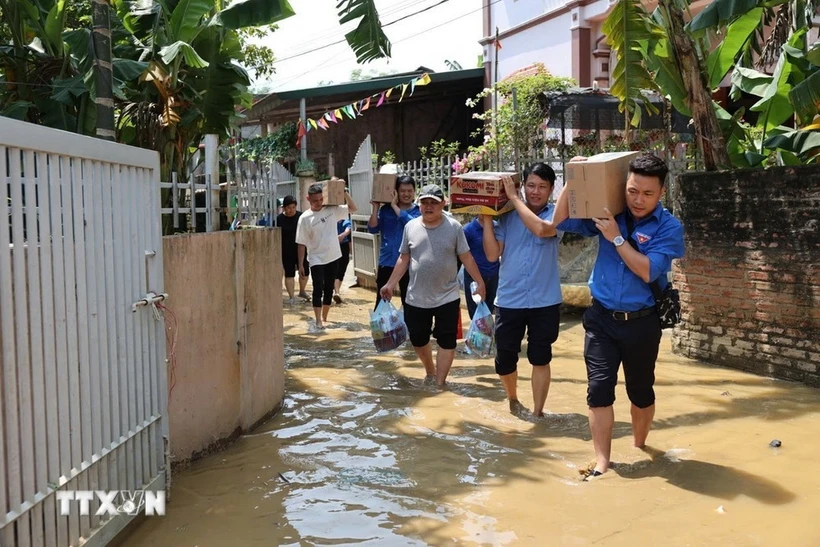 |
| Representatives of the VNA's Ho Chi Minh Communist Youth Union chapter and Communications Development Centre deliver relief to residents in Ha Hoa district, Phu Tho province, on September 14. (Photo: VNA) |
On September 14, a delegation of the VNA’s Ho Chi Minh Communist Youth Union chapter and Communications Development Centre visited and delivered aid to flood victims in Phu Tho province.
In Ha Hoa district, one of the worst-hit districts, the delegation presented 300 gift packages, mainly essential goods, and a large number of textbooks and school supplies worth nearly 200 million VND (8,100 USD) in total to residents in seriously flooded communes.
Initial statistics show that two people have died while one been injured in Ha Hoa. Meanwhile, over 4,300 households have had to evacuate due to flooding and landslides. Damage to educational, transport and irrigation infrastructure, along with agriculture is considerable.
Losses caused by Typhoon Yagi here are estimated at more than 143 billion VND.
On September 13 - 14, the Party Committee, People’s Council, People’s Committee, and Vietnam Fatherland Front Committee of the southernmost province of Ca Mau held two fundraising programmes to support storm-hit people in the northern region. A total of 145.3 million VND was donated at these events.
Ca Mau has also donated 6.7 billion VND sourced from the local budget to the Central Relief Mobilisation Committee as well as nine localities hit hard by the storm and flooding.
Meanwhile, the Permanent Mission of Vietnam in Geneva and the Vietnamese Embassy in Switzerland held events on September 13 to call for donations to the affected people.
In Laos, the Vietnamese Consulate General in Pakse city of Champasak province, the General Association of Vietnamese People in Laos, and the Vietnamese People Association in Vientiane have also organised similar activities to raise support for storm victims in the homeland along with the northern Lao provinces affected by Yagi.
As of September 14 noon, the Vietnamese Consulate General in Pakse had raised 188 million LAK (8,500 USD), the General Association of Vietnamese People in Laos 175 million LAK, and the Vietnamese People Association in Vientiane over 100 million LAK.
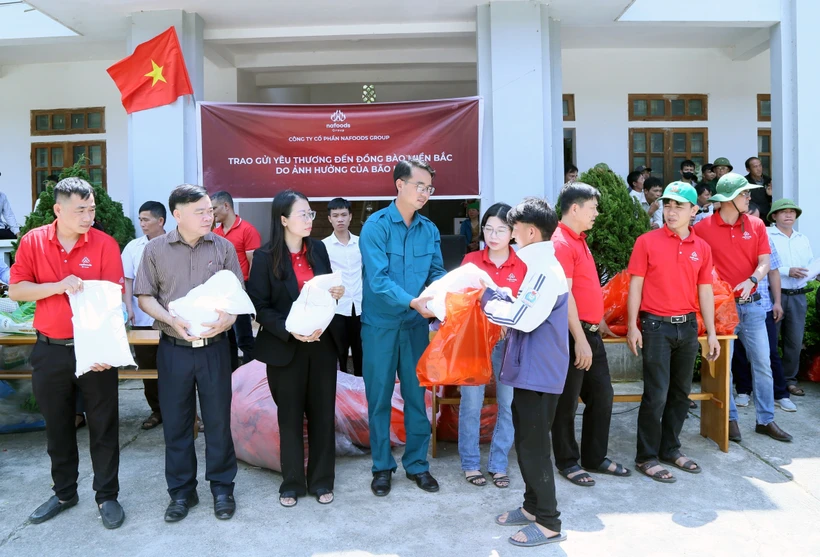 |
| Assistance provided to people affected by Typhoon Yagi in Ngoc Chien commune, Muong La district, Son La province (Photo: VNA) |
On September 13, the Vietnamese Embassy in Japan held a teleconference on the fundraising where representatives of Vietnamese people’s associations in the country reported that many organisations in the community have actively responded to the campaign.
Via the Vietnam Fatherland Front, the Vietnamese community in Kansai donated 202 million VND while the Vietnamese People Association in Saitama gave 200 million VND in aid. The Union of Vietnamese Associations in Japan has also called for donations from the OV community across the Northeast Asian nation, collecting 512,000 JPY (3,600 USD) so far.
Typhoon Yagi, the most powerful in the East Sea in 30 years and in the Vietnamese mainland in 70 years, caused heavy human and property losses.
As of 6am on September 15, the storm and its accompanying downpours, flooding, and landslides had left 348 dead or missing and injured 1,921 others. They damaged nearly 232,000 houses, more than 190,000ha of rice, nearly 48,000ha of other crops, 32,000ha of fruit trees, along with 3,269 aquatic cages. More than 2.6 million poultry and livestock were also killed.
The Ministry of Planning and Investment estimated material losses at about 40 trillion VND (over 1.6 billion USD).
Ministry proposes applying technology to quality control
The Ministry of Science and Technology has proposed that technology be applied to quality control and origin tracing for products in a draft amendment to the Law on Product and Goods Quality, reported Vietnam News Agency.
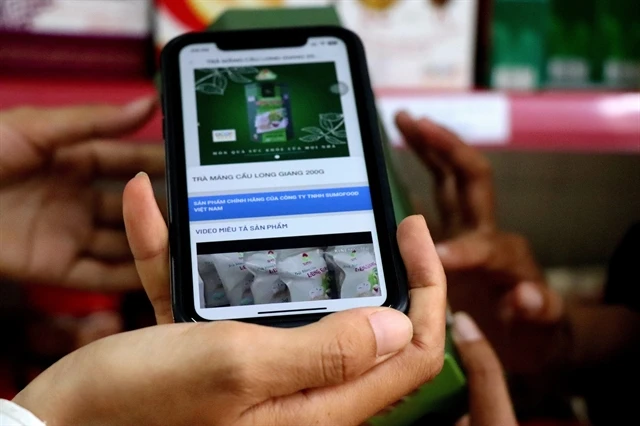 |
| The Ministry of Science and Technology has proposed technological solutions be applied to quality control and origin tracing for products. (Photo: VNA) |
Possible tech solutions include barcodes and electronic labelling, which are tools for manufacturers to monitor product quality and trace origin. They also allow customers to search for product quality information and state management agencies to manage production and distribution processes, the ministry said.
Codes and barcodes also help promote international trade and integration by creating favourable conditions for enterprises to participate in global e-commerce, trace origins, provide product data to partners and facilitate customs processing.
Countries around the world are increasing the use of technology like codes and barcodes to inspect the origins of products.
The application of technology will also help increase the competitiveness of Vietnamese products in international markets while creating a digital ecosystem in line with global development trends, the ministry said.
Supplementing regulations on codes and barcodes in quality control is therefore critical, the ministry added.
In the draft, the ministry proposes the Government develop policies and incentives to encourage the application of technologies in supervising and managing the quality of products and goods./.